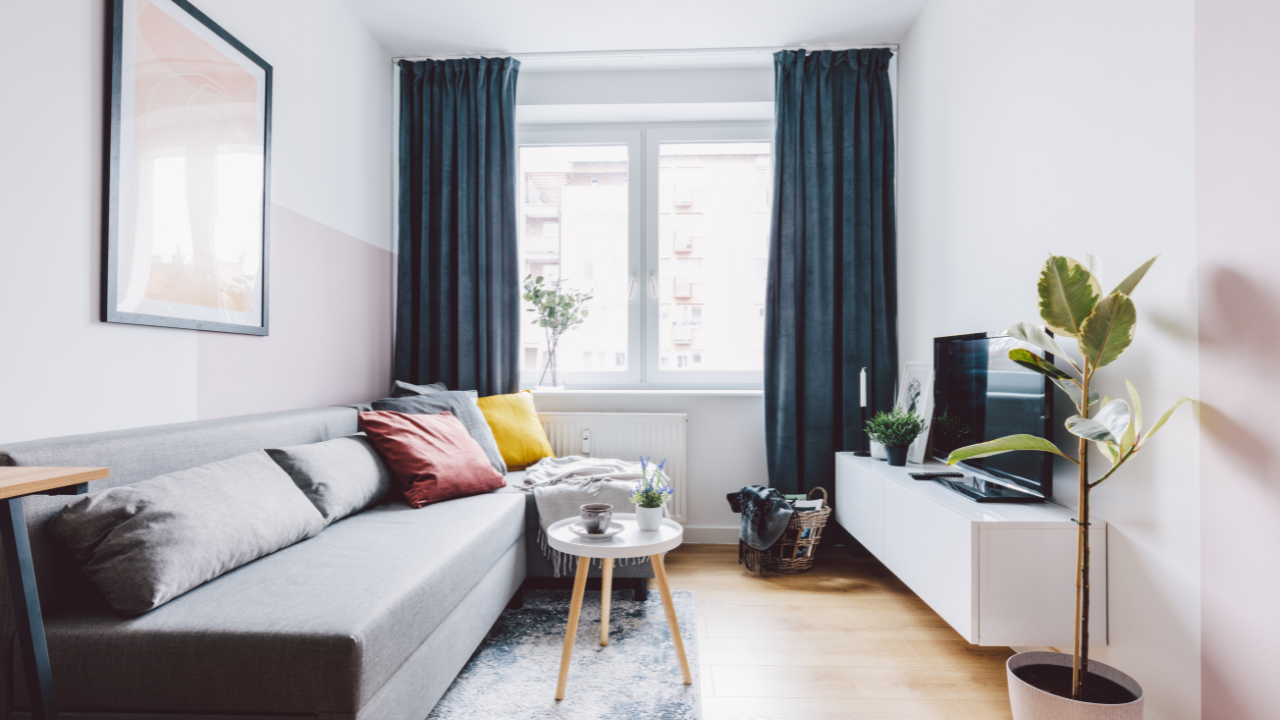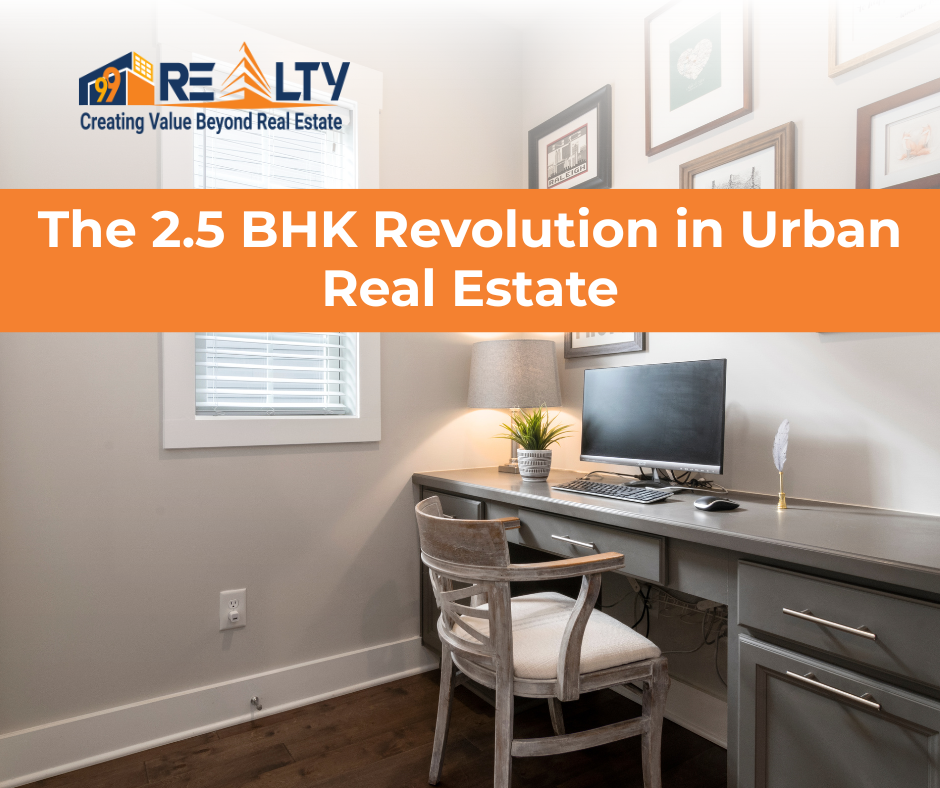Urban India is in the middle of a housing revolution—and it’s not just about flashy skyscrapers or smart-home tech. It’s about redefining how Indian families live, work, and grow. And at the center of this quiet evolution is an unusual yet powerful housing format: the 2.5 BHK.
Neither a compact 2 BHK nor a sprawling 3 BHK, the 2.5 BHK hits that perfect middle ground. It’s the “Goldilocks” of Indian real estate—not too small, not too big, but just right. And right now, it’s changing the way urban Indians think about space, value, and the future.
Redefining Real Estate Marketing in 2025: A Comprehensive Guide for the New-Age Buyer
What is a 2.5 BHK? Decoding the Concept
Let’s break it down. A 2.5 BHK apartment typically includes:
- 2 full-size bedrooms
- A hall (living area)
- A kitchen
- And an extra “Half” room
The “.5” Confusion Explained
The “.5” doesn’t mean half a wall or a glorified cupboard. It’s usually a smaller room—about 60 to 100 sq. ft.—that can serve as:
- A study
- A kids’ room
- A puja room
- A home office
- Housekeeper room
- Or even a guest corner
More Than Just Marketing
While some skeptics might dismiss it as a marketing gimmick, real buyers know better. In a world where remote work, hybrid lifestyles, and multi-functional spaces are the norm, this extra room is often the deciding factor.
The Rise of the 2.5 BHK in India

So why is everyone from Metros talking about this format?
Changing Lifestyles, Changing Homes
Today’s urban families are nuclear, mobile, and flexible. A traditional 2 BHK often feels cramped, while a 3 BHK might strain the budget. Enter the 2.5 BHK—the sweet spot.
- It’s affordable
- It’s future-ready
- And it adapts to your evolving needs
Developers Respond to Demand
Builders across metros and tier-2 cities are catching on. Real estate leaders like Godrej, Lodha, Jashn Realty, Prestige, Shriram etc. are now showcasing 2.5 BHKs as a key offering in new projects, especially in growing corridors.
Why Not Just 2 or 3 BHK?
You might wonder: Why not just buy a 2 BHK and manage, or stretch to a 3 BHK?
The 2 BHK Problem
As urban life becomes more dynamic—with WFH setups, online schooling, fitness routines, and visiting family members—a standard 2 BHK just doesn’t cut it.
The 3 BHK Problem
Yes, it gives more space—but also comes with:
- A significantly higher cost
- Higher maintenance
- And often, under-utilized rooms
Demystifying Maintenance Charges on Flats: What Every Homebuyer Should Know
2.5 BHK: The Perfect Middle Ground
That little “half” room isn’t small in impact. It’s the secret ingredient that makes the home feel larger, smarter, and future-proof.
The Space Dilemma: Urban Families’ New Needs
Indian cities are growing vertically, but apartment sizes aren’t. With cities bursting at the seams, space is tight and every square foot matters.
Families want:
- Space for WFH or hybrid work
- A corner for kids to study or play
- A room for guests or aging parents
- And they want it without paying 3 BHK prices
A 2.5 BHK offers all of this, in a well-thought-out format.
Affordability Meets Aspirations
Cost Comparison: 2 BHK vs 2.5 BHK vs 3 BHK
Let’s talk numbers.
| City | 2 BHK Avg Price | 2.5 BHK Avg Price | 3 BHK Avg Price |
|---|---|---|---|
| Mumbai | ₹65–70 lakh | ₹75–80 lakh | ₹85–95 lakh |
| Bengaluru | ₹55–60 lakh | ₹65–70 lakh | ₹75–85 lakh |
| Chennai | ₹50–55 lakh | ₹60–65 lakh | ₹70–80 lakh |
The jump from 2 BHK to 2.5 BHK is often 10–15%, while the leap to 3 BHK is 25% or more. The math just makes sense.
Who’s Buying 2.5 BHKs?
Young Professionals and Nuclear Families
Techies, freelancers, and millennial couples love it. It fits their lifestyle, allows for future planning, and supports remote work without eating into living space.
NRIs and Investors
For NRIs looking for smart investments in India, the 2.5 BHK offers:
- High rental demand
- Versatility across tenant types
- Strong resale value
Elderly Buyers
Empty nesters looking to downsize also find this format attractive. It’s compact yet comfortable—with room for guests or caregivers.
The Pandemic Effect: Work-from-Home and Flex Spaces
Remember the lockdowns? Suddenly, your home had to be:
- A workspace
- A school
- A gym
- And sometimes, a full-time retreat
The extra “half room” in a 2.5 BHK became a lifeline. And even now, with hybrid work and virtual classes here to stay, this flexibility remains in high demand.
Flexibility: The Half Room Advantage
Here’s what that “.5” room could become:
- A soundproof Zoom room
- A yoga or meditation space
- A mini art studio
- A nursery or toddler’s room
- A reading nook or home library
- A makeup room or changing cum storage unit (clothes, shoes, cosmetics etc)
It’s not just square footage—it’s square freedom.
Design Innovations in 2.5 BHK Apartments
Developers are upping their game. Today’s 2.5 BHK flats come with:
- Open kitchens to maximize space
- Sliding partitions to add privacy
- Smart storage solutions
- Convertible furniture
- And even customizable layouts
So that tiny room? It doesn’t feel tiny anymore.
Location, Connectivity, and Lifestyle
Most 2.5 BHK projects are located in strategically developed corridors—close to:
- IT hubs
- Schools and hospitals
- Metro stations
- And shopping centers
Plus, many projects offer lifestyle perks like:
- Clubhouses
- Pools
- Jogging tracks
- Co-working spaces
It’s a home + lifestyle combo that younger buyers love.
Rental and Resale Value: The Investment Perspective
From an investor’s lens, the 2.5 BHK hits multiple checkboxes:
- Higher rental yields than 2 BHKs
- Easier resale due to growing demand
- Broad tenant appeal—from students to small families
If you’re buying with ROI in mind, this is a future-ready option.
Challenges and Criticisms
Of course, the format isn’t without flaws.
Design Misuse
Sometimes, developers label a balcony or storeroom as the “half room.” That’s misleading.
Awkward Layouts
Without smart design, the extra room might feel cramped or poorly lit.
Legal Ambiguity
There’s still no uniform legal definition of “.5 BHK” across Indian states, which leads to confusion during registration or loan approvals.
Solution? Always check the carpet area and floor plan, not just the brochure.
2.5 BHK: A City-Wise Snapshot
Mumbai & Navi Mumbai
Space-starved buyers are embracing 2.5 BHKs in Thane, Kalyan, Dombivli, and Panvel. It’s being promoted as a “smart 3 BHK” alternative.
Bengaluru
Whitefield, Sarjapur, and HSR Layout are hotspots. Young IT couples love the flexibility for WFH and raising a family.
Chennai & Hyderabad
Both cities are seeing a surge in 2.5 BHK offerings along their IT corridors—appealing to both local buyers and returning NRIs.
What to Look for When Buying a 2.5 BHK
1. Carpet Area vs Built-Up Area
Don’t get fooled by numbers. Ask for clear carpet area for all rooms—especially the half room.
Comprehensive Guide to Carpet Area, Built-Up Area, and Super Built-Up Area in Real Estate
2. Shape and Utility
Make sure the room isn’t a triangular nook or dark storage space. It should be usable, ventilated, and well-lit.
3. Amenities and Location
Your home is part of a lifestyle. Choose projects that offer amenities and good connectivity, especially if you plan to rent or resell.
The Future of Urban Living: Is 2.5 BHK Here to Stay?
Absolutely. As Indian cities grow denser and urban lifestyles become more fluid, the demand for homes that adapt with you will soar.
The 2.5 BHK isn’t a passing fad—it’s the next chapter in urban Indian living. It’s space with purpose, flexibility with affordability, and investment with emotion.
The Importance of Eco-Friendly Homes: What You Need to Know
Conclusion: A New Chapter in Indian Housing
The 2.5 BHK represents more than real estate—it’s a mindset shift. In a country where space is expensive and needs are growing, it offers a smart, balanced, and future-proof solution.
For nuclear families, young professionals, or smart investors—it’s the kind of home that grows with you. Not too much, not too little, just right.
FAQs
Q1: What exactly counts as the “half” room in a 2.5 BHK?
A: It’s typically a smaller, separate room without an attached bath. Think: study, guest room, or mini office.
Q2: Are 2.5 BHKs more expensive than 2 BHKs?
A: Yes, but usually by only 10–15%. It’s a cost-effective upgrade compared to a full 3 BHK.
Q3: Is a 2.5 BHK a good investment?
A: Definitely. They attract better rental yields and offer higher resale value thanks to their versatility.
Q4: Can I customize the half room?
A: Many new projects offer flexible layouts so you can convert the space as per your needs—WFH zone, nursery, or prayer room.
Q5: Is the 2.5 BHK trend limited to big cities?
A: Not at all. While metros are leading, even tier-2 cities are seeing rising demand due to hybrid work and shifting lifestyles.
Need Help?
Need help evaluating a property or planning your next move in the market?
Reach out to 99 REALTY – your trusted real estate partner for smarter choices.
Subscribe to get updates on our latest posts and market trends.






Join The Discussion